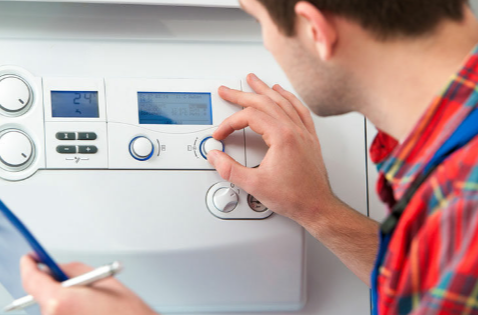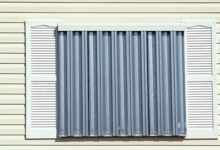How to Use Your Ducted Heating System Effectively

Efficient use of your ducted heating system not only keeps you warm and comfortable but also helps in reducing energy consumption and utility bills. In this guide, we’ll explore strategies to maximise the efficiency of your ducted heating system, from proper usage techniques to maintenance tips and smart heating practices.
1. Understand Your Ducted Heating System
Before delving into efficiency strategies, it’s crucial to understand how your gas ducted heating system operates. Familiarise yourself with the main components, including the heating unit, ductwork, thermostat, and vents. Knowing how your system works will help you make informed decisions about its usage and maintenance.
2. Set Optimal Temperature Settings
One of the simplest ways to maximise efficiency is to set your thermostat to optimal temperature settings. During the winter months, aim for a comfortable temperature range of around 18-20°C (64-68°F) when you’re at home and slightly lower when you’re asleep or away. Each degree increase in temperature can significantly impact energy consumption and heating costs.
3. Use Programmable Thermostats
Investing in a programmable thermostat allows you to customise heating schedules based on your daily routine. Set the thermostat to lower temperatures when you’re asleep or away and raise it just before you wake up or return home. This helps to minimise energy waste without sacrificing comfort.
4. Zone Your Heating System
If your ducted heating system supports zoning capabilities, take advantage of this feature to heat different areas of your home independently. Zone heating allows you to direct heat only to occupied rooms, reducing energy consumption in unoccupied areas. Adjusting the airflow to specific zones can also help balance temperatures throughout your home more effectively.
5. Maintain Your Ductwork
Proper maintenance of your ductwork is essential for maximising efficiency and airflow. Inspect the ductwork regularly for leaks, gaps, or damage, and seal any openings with duct tape or mastic sealant. Clean the ducts periodically to remove dust, debris, and allergens that can obstruct airflow and reduce efficiency.
6. Replace Air Filters Regularly
Clogged or dirty air filters restrict airflow, forcing your ducted heating system to work harder to maintain desired temperatures. Replace disposable air filters every 1-3 months, depending on usage and air quality. For reusable filters, clean them according to manufacturer guidelines to ensure optimal performance.
Read more Navigating California DOT Physical Requirements for 2024
7. Schedule Professional Maintenance
Schedule annual maintenance checks with a qualified HVAC technician or electrician from https://seselec.com.au/ to keep your ducted heating system in top condition. A professional inspection can identify any issues or inefficiencies early on and prevent costly repairs down the line. During maintenance visits, the technician will clean components, lubricate moving parts, and perform any necessary adjustments to ensure optimal performance.
8. Maximise Natural Sunlight
Take advantage of natural sunlight to supplement your heating system during the day. Open curtains or blinds on south-facing windows to allow sunlight to enter your home and warm up interior spaces naturally. Close curtains or blinds at night to retain heat and reduce heat loss through windows.
9. Seal Air Leaks and Insulate
Air leaks around doors, windows, and other openings can contribute to heat loss and reduce the efficiency of your ducted heating system. Seal gaps and cracks with weatherstripping or caulking to prevent cold drafts and improve insulation. Consider adding insulation to walls, floors, and attics to further reduce heat loss and energy consumption.
10. Dress Appropriately
Wearing warm clothing and using blankets or throws can help you stay comfortable without relying solely on your ducted heating system. Dress in layers and opt for thermal or insulated clothing to retain body heat indoors. Using portable space heaters or electric blankets in frequently occupied areas can also supplement your heating system while reducing overall energy usage.
11. Embrace Smart Heating Technology
Smart heating technology allows you to control your ducted heating system remotely and optimise energy usage based on your preferences and schedule. Invest in smart thermostats, smart vents, or home automation systems that offer features such as geofencing, learning algorithms, and energy usage tracking. These technologies can help you fine-tune your heating system for maximum efficiency and comfort.
12. Utilise Ceiling Fans
Ceiling fans can help distribute warm air more evenly throughout your home, reducing the workload on your ducted heating system. In winter, set your ceiling fans to operate in reverse (clockwise) at a low speed to gently push warm air down from the ceiling. This can help maintain consistent temperatures and reduce the need for higher thermostat settings.
Conclusion
Efficient use of your ducted heating system is essential for optimising comfort, minimising energy consumption, and reducing heating costs. By implementing the strategies outlined in this guide, such as setting optimal temperature settings, maintaining your ductwork, embracing smart heating technology, and maximising natural sunlight, you can make the most of your heating system while lowering your environmental impact. Remember to schedule regular maintenance checks and monitor your energy usage to ensure long-term efficiency and performance. With proper care and smart heating practices, you can enjoy a cosy and comfortable home throughout the winter months.








